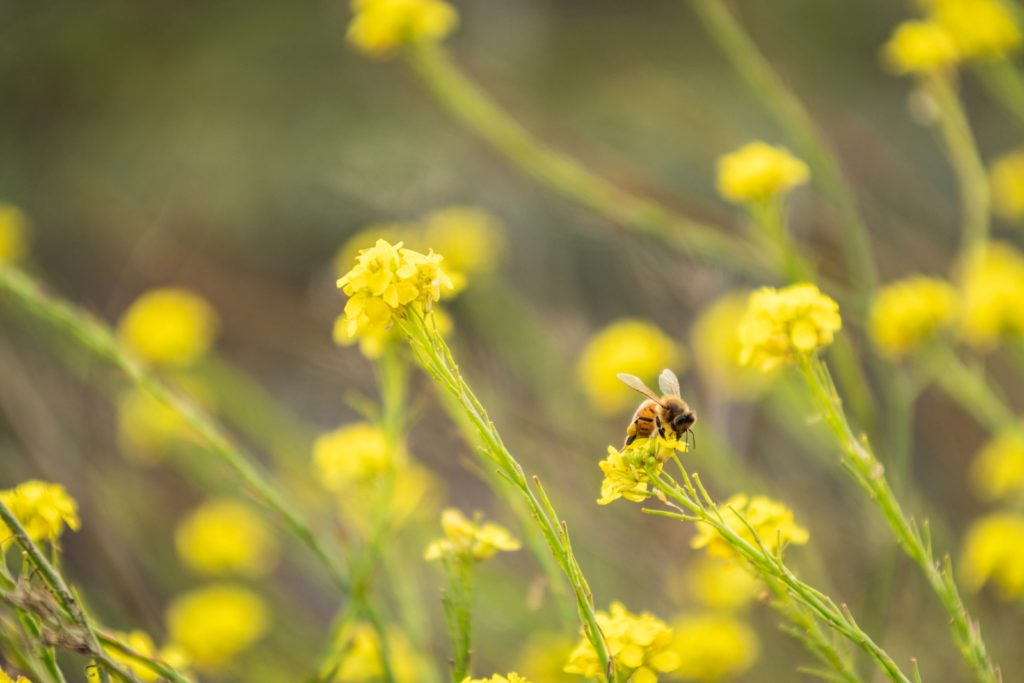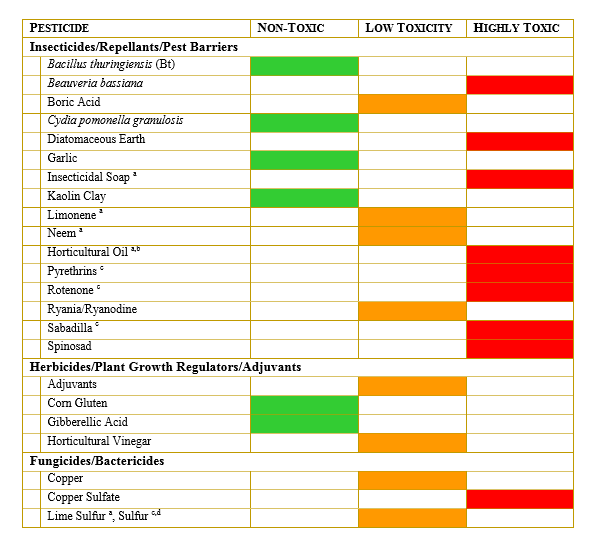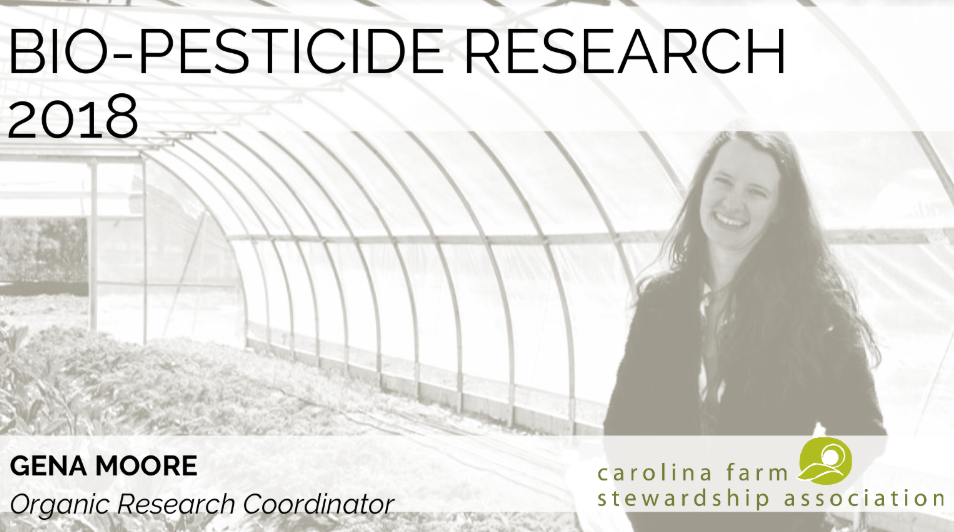By Gena Moore, CFSA Organic Research Coordinator | Thursday, Dec. 6, 2018 –
This year, CFSA initiated a study to research the efficacy of organic and natural pesticides. Pesticides are the last line of defense for many organic farmers against weeds, disease and harmful insects and the effectiveness of such pest control can be the determining factor between crop success and failure.
But before we dive into our research, here are some interesting facts about organic and natural pesticides:
1. “Organic foods are not necessarily pesticide-free. The pesticides that are allowed for organic food production are typically NOT manmade.” Learn more at Oregon State’s National Pesticide Information Center.
2. “Low-toxicity pesticide products are labeled with a signal word of ‘CAUTION‘, rather than ‘WARNING‘ or ‘DANGER‘. No matter how toxic a pesticide may be, it’s important to follow all of the label directions.” To reduce the risk of exposure, consult this handy list.
3. USDA organic products must meet the following requirements of:
- Produced without excluded methods (genetic engineering, ionizing radiation, or sewage sludge).
- Produced using allowed substances.
- Following all USDA organic regulations.
4. While organic farming benefits the environment in many ways, some organic-approved pesticides can damage pollinator populations. Selecting the least toxic options and proper application is key to protecting both pollinators and other beneficial insects. Learn more over on Xerces Society’s conservation fact sheet.
Table by Xerces Society
5. According to the EPA, “Biopesticides generally affect only the target pest and closely related organisms, in contrast to broad spectrum, conventional pesticides that may affect organisms as different as birds, insects, and mammals.”
As an organization that supports organic and sustainable farms, CFSA hopes that preventative Integrated Pest Management (IPM) strategies can keep pest at bay, BUT when thresholds are met the safe and responsible application of a non-synthetic pesticide may be the way to go.
2018 Research Summary
Our study was divided into three phases: herbicides, fungicides, and insecticides.
Phase 1: Herbicides
We used three different herbicides on a surrogate weed crop of Japanese millet and grain amaranth for four weeks per label instructions. Data was collected on weed counts, percent cover, and dry weight matter. Check out our preliminary results below.
- Planting Date: Apr. 20, 2018
- First Application: May 15, 2018
- Phase Terminated: Jun. 12, 2018
Phase 2: Fungicides
We used three different fungicides on a crop of ‘Dunja’ zucchini. The fungicides were sprayed for five weeks per label instructions. Plants were approximately 10 weeks old when thresholds were met and spraying began. NC Pest and Disease laboratory indicated significant disease and pest pressure on Jun. 25, 2018. Data was collected on yield, disease (Horsfall-Barrett Rating), and plant removal. Check out our preliminary results below.
- Transplanting Date: May 11, 2018
- First Application: Jun. 29, 2018
- First Harvest Date: Jun. 8, 2018
- Phase Terminated: Jul. 31, 2018
Phase 3. Insecticides
We used three different insecticides on a crop of tatsoi. The insecticides were sprayed for four weeks per label instructions after thresholds were met. Data was collected on insect damage and yield. Check out our preliminary results below.
- Transplanting Date: Sept. 20, 2018
- Harvest Date: Oct. 25, 2018
- First Application: Sept. 25, 2018
- Phase Terminated: Oct. 25, 2018
Our preliminary results were presented at the 2018 Sustainable Agriculture Conference. View the presentation for more information! Want more? See the completed study: Evaluating the Efficacy of Organic Pesticides.
Questions?
Reach out to Gena Moore, CFSA Organic Research Coordinator
gena@carolinafarmstewards.org | (919) 542-2402





